Our glutes, hips and core tend to get all the attention in discussions of running injuries, but our calves are responsible for quite a lot of the effort that goes into running. Which is why many runners find themselves wondering how to release tight calves from running or how to strengthen their calves for more powerful running.
Finnish scientists determined that the overall effort of the calf muscle is 25% higher than that of the quads.
AND THAT MY FRIENDS is why we often experience muscle cramps in our calf muscles first or why newer runners find them sore.
Let’s first understand what we’re referring to and then dive in to the specific ways to prevent calf pain from calf stretches to strength.
Calf Tightness from Running
Made up of two different muscles, (the gastrocnemius and the soleus) calves are our body’s natural shock absorbers. The calf is part of absorbing the impact through your foot, then lifting the heel to push on to your toes and power off the ground. In fact, your calves may lift your heel up to 1500 times per mile!
They handle eight times our body weight every time we land and push off, that’s some serious work for thousands of steps during a run.
When they become overworked, we often describe the feeling as tight. That could mean they feel warm from inflammation, hard to the touch, a little twitch or even getting muscle cramps.
Unfortunately tight calf muscles aren’t just uncomfortable, they’re a sign that something needs to change. That consistently tight, weak or overworked muscle can lead to other injuries.
Tight calf muscles can affect other areas of the body:
- Knee pain from pulling the knee out of alignment
- Achilles pain
- Plantar fasciitis
- Hip or glute pain
- Lower back pain while running
- Shin Splints from Running (early signs of this are tight calves)
Your entire leg is connected (obvious, right, but we need that reminder!), which means that when one muscle is off other areas try to compensate or get pulled out of alignment increasing injury risk.
Before you jump right to looking for calf stretches for runners, you need to understand what Physical Therapist Lisa Mitro says about that!
The problem with static stretching or holding a stretch for >30 seconds and why it’s least effective for your muscles or tendons is because tendons are inflexible meaning they return to their normal resting state after a static stretch is over. Tendons are kinda like a rubber band- elastic in that they can stretch but after you release they are going back to the starting position aka recoil.
If a muscle has a tight sensation, chances are it is weaker and needs to be strengthened through the available range.”
Sore Calves from Running?
If you are dealing with calf tightness right now and need some relief, here are a few of my favorite tips.
- Pull on a great pair of compression socks – this is going to increase blood flow to the area
- Slather on some Magnesium cream – this is basically like Epsom Salt in a bottle. That’s the one that I use. It’s not going to cause immediate relaxation, but it works.
- Take a hot bath, particularly an espom salt bath
- Use the heating pad to release tightness, never ice. (learn about when to use ice vs heat)
What Our Cavles Do While Running?
Ever wondered what your calf muscles are doing that leads to them feeling so overworked? It may not feel as obvious as your glutes or quadriceps, but the calves are HUGELY important powerhouse muscle.
Deceleration
When we have to slow down, stop, or turn suddenly during a run, our calves absorb up to 12 times our body weight as we make the change in pace or direction.
Knee stabilization
The calf muscles help protect the knee joints when we jump in vertical and lateral movements.
The smaller soleus muscle keeps the tibia over the heel bone, preventing us from falling over with each step.
Vertical jumping power
The gastrocnemius contains mostly fast-twitch muscle fibers that help us with explosive moments like squat jumps, plyometrics, running speed, and uphill running strength.
Signs of a Calf Strain
Before we dive in to the causes of calf pain while running, let’s first rule out that it’s something larger like a calf strain or muscle tear.
Mitro says “I would be concerned if the patient can’t lift their heel off the ground, especially when walking and would recommend they seek a doctor immediately.
If you’re feeling sharp calf pain while running, it’s possible you’ve got a calf strain. Like many runner injuries from IT Band Syndrome to Shin splints, it’s avoidable if we don’t break the rule of too much, too soon, too fast.
Signs of a calf strain:
- Mild ache in the calf
- Moderate pain walking
- Swelling (always a sign to STOP what you’re doing)
- Bruising or redness (bruising is far less common, but the redness is usually the heat of inflammation)
- Difficulty rising up on to your toes
If you do have a calf strain with swelling, it’s time to stop running until the swelling is gone and you don’t have any pain while walking. This could be up to 4-6 weeks, for something more mild you might be back out there in a week.
It’s also important to recognize when your tightness is actually something more and not try to just push through.
Yes, that tricky little line of discomfort vs pain!
Should I Run With Calf Tightness?
Calf tightness should not include swelling and it should not be painful to walk around. So as long as it’s not a strain you can continue running, but need to spend time discovering the cause of your tightness.
Look through the most common reasons below and figure out what area you need to pay attention too. It’s extremely common to need to work on our strength.
Calf tightness while running usually isn’t a red flat must stop injury. But as always, it’s your body telling you to pay attention because running SHOULD NOT be painful.
Common Causes of Calf Tightness While Running
Since our calf muscles are comprised of smaller muscles than others in our legs, they tend to fatigue more quickly. In order to prevent injury and improve running performance, we need to keep them strong so they can do their jobs.
Running Too Much
If you’re new to running then the entire body is going to take some time to adapt. It’s really important in this case to give yourself enough to appropriately increase your mileage or intensity.
How quickly you can increase running mileage will vary by person, but the general rule of not adding more than 10% a week is pretty accurate.
Poor Foot Strike While Running
Running up on the ball of your foot is going to leave the calves in a constantly flexed position forcing them to work for the entire duration of your run.
Instead, we want to land more on the mid-foot, which allows you to full flow through your foot and gives the calves a chance to power up and then relax.
Checkout this video for tips on running foot strike.
Skipping the Dynamic Warm Up
The reason we spend 5-10 minutes prior to every run doing dynamic warm up is specifically to help loosen up tight muscles and lubricate the joints.
Specifically for your calves this might mean a little bit of time in downward dog pedaling your feet back and forth. Then when you move in to lunges, they’ll be activated as well.
Incorrect Running Shoes
If you’ve recently switched to a Zero Drop shoe that can easily cause extra work for your calves leading to tightness. It’s really important when making any substantial shift in footwear to ease in to the new style.
Additionally, shoes that have been worn long past their usefulness could result in pain. Once the cushioning has broken down, it changes the way your foot hits the ground. This could mean your calves are doing extra work to stabilize your foot.
Dehydration
Yup, not taking in water or electrolytes during your run could be a culprit. Muscles get tighter and less flexible as they are sucked dry!
Try something small like telling yourself that you will take a sip of water every time you hit a mile. And for morning runners remember that you need to get some good hydration before starting the workout. It can help to dump an electrolyte powder in your drink, as that light sweetness will encourage drinking.
Not Foam Rolling or Stretching
If you’re dealing with areas of tightness, then it’s important to make recovery part of your daily routine. This includes using a foam roller to release fascia, a massage gun to help release tight muscles and stretching.
Below I’ll provide some specific calf stretches for runners. Remember NEVER to static stretch prior to a run. These are things you want to do after the run or at the end of the day.
Skipping the Strength Training
You absolutely need to build your calf strength. Additionally, you have to continue focusing on hip, glue and core strength. Any weak muscle will need to be compensated for by another, which is one of the reasons your weak glutes could impact your calves.
All of these things play a roll in allowing the body to move most efficiently. And possibly more importantly to help keep your leg in proper alignment throughout your stride.
7 Calf Exercises for Runners
You know how much I love mobility and strength for injury prevention, so it should come as no surprise that I’m going to include some exercises to incorporate before and after your runs. After that we will talk about stretching.
You can easily perform all of these calf exercises at home, without the need for special equipment.
Seated Resistance Band
A great place to start is with a resistance band because you can control the intensity and improve range of motion all at once. While seated, loop the band around the ball of your foot and then slowly push forward.
Especially great if you’re getting over a calf strain.
Calf Raises
Starting with both feet flat on the ground, simply raise up on to your toes and lower back down. Even 10 reps of this prior to a run is a good warm up!
Once that feels easy, then you can take it to a stair.
Here you place the ball of your feet on the stair and raise up on your toes, then lower down so your heels go below the step before raising back up. I used to do reps of this after my runs, so if you’re looking to get my legs, do this. HA!!
Eventually you can move to doing those on just one leg, which is ideal for continuing to work on our balance as runners.
Build up to single leg calf raises over several weeks with the following exercises:
- Seated calf raises. Sit in a chair with both feet on the ground. Lift the heels to full extension and hold for 10 seconds. Repeat 10 times.
- Double leg calf raises two to three times a week for three weeks. Repeat 10 times.
- Double up, single down calf raises. If you have the double leg down, but can’t quite get the reps for single leg, move on to lifting with both heels, lowering down on one leg. Repeat 10 times.
Jumping Rope
Another elementary school move, jumping rope is an excellent calf-strengthening move. Simply jump rope, starting with four rounds of 15 seconds, working your way up to one minute at a time.
No jump rope? No problem. Just pretend like you have a rope and mimic the movement. Try to land on your toes.
Jump squats
A round of jump squats will get your calf muscles ready for the run ahead.
With feet shoulder distance apart and toes turned slightly outward, use arms to help propel your body upward as you squat down and jump up. Land softly and use the momentum to repeat the movement.
Complete 2-3 sets of 10 jump squats.
Calf Stretches for Runners
These are great exercises to do while you’re watching TV to wind down for the evening or while waiting for that pasta water to boil. They take just a few minutes and make a big impact.
Remember that all the stretching in the world, won’t make up for weak muscles. So don’t skip the above ideas!
Assisted Wall Stretch
Here’s a quick test you can do to see if you’ve got a good range of motion, which is key for the proper push off.
- Stand barefoot facing a wall with the right foot about three inches away from the base of the wall. Take a step back with your left foot, keeping the knee bent.
- Bend at your ankle to touch your kneecap to the wall without lifting your heel off the ground. If you can do so without lifting your heel then you have good range of motion.
- Repeat on the other leg.
If you failed on either side, then regularly incorporate the exercises below until you can successfully perform the test.
Downward Facing Dog
This yoga move is super for tight calves.
Start on hands and knees and raise your hips to the ceiling, straightening the legs and pushing the heels toward the ground. It’s ok if your feet are not flat on the ground.
Pedal your feet one at a time for 30 seconds and then hold the position for 30 more.
Stair Release
Previously we mentioned doing calf raises on the stair, here we want to simply do a static hold. With your heel hanging off the back of the stair allow the calf to fully stretch out
Simply hold this position for 30 seconds to 1 minute.
Foam Rolling Your Calves
You’ve been warned! Foam rolling is killer on the calves, but one of those oh-so-good painful feelings.
Sit on the floor with a foam roller and lift the right leg on top of the roller. Cross the left leg over so it is resting on top of the right, use your arms to lift your butt off the ground and feel the burn as you roll the length of the calf.
Perform 30 seconds per side.
- For better results I actually like the massage stick
- Or you can squeeze a PT ball between your calf and hamstring to go deep
Hopefully this gave you some ideas about the cause of your tight calves after running. But more importantly some specific steps you can start taking right now to make improvements.
How do you incorporate calf strength and mobility into your running routine?
Other ways to connect with Amanda
Instagram Daily Fun: RunToTheFinish
Facebook Community Chatter: RunToTheFinish
Get more running tips: Pinterest
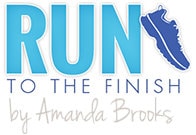
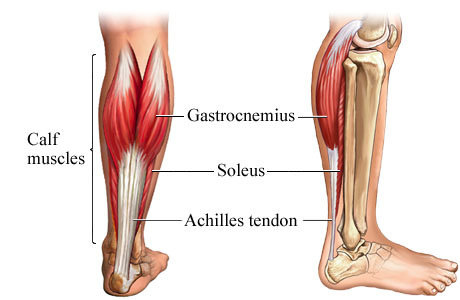
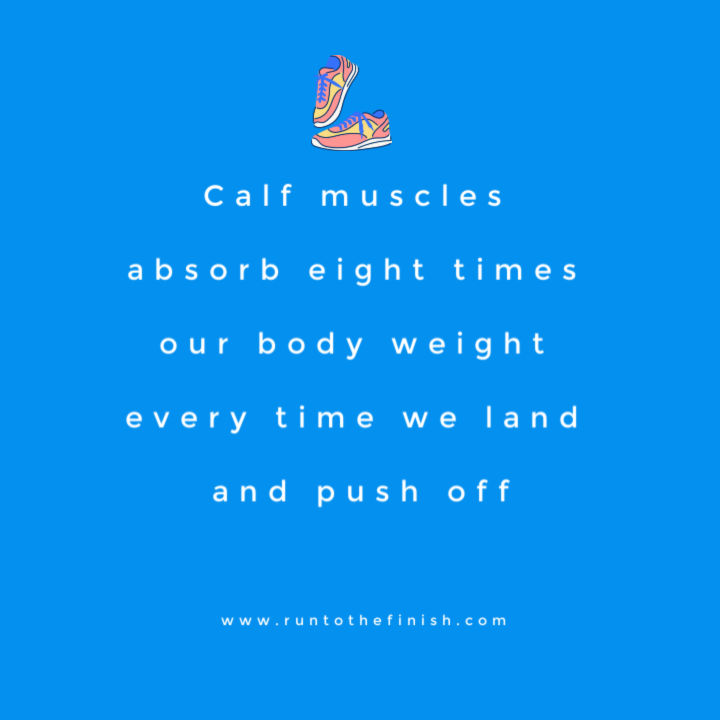
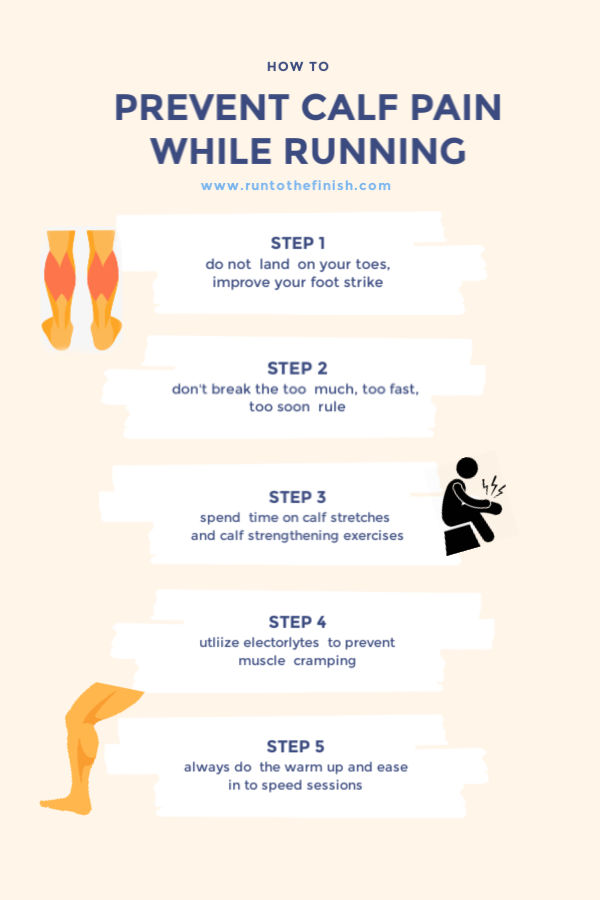
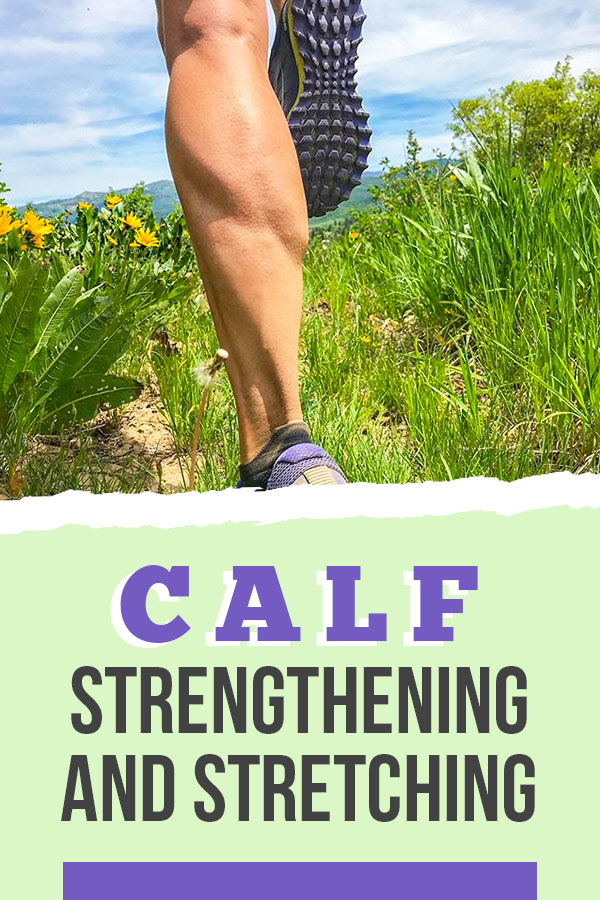

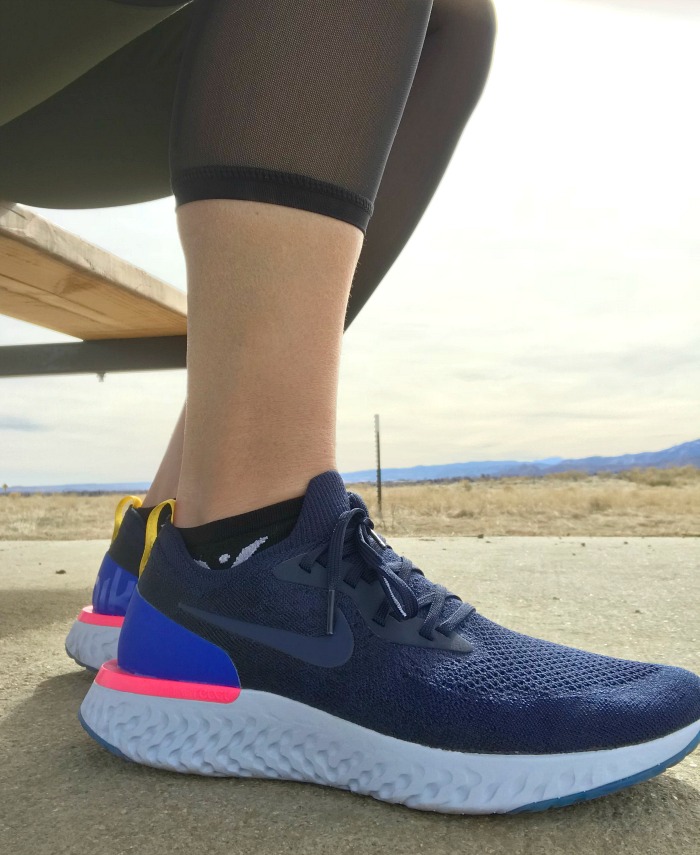 Nike Vs New Balance | Comparing Models
Nike Vs New Balance | Comparing Models
Jane Springston
As someone who has suffered off and on from tight calves, Achilles issues, and plantar fasciitis, this is all helpful info, Amanda! I do eccentric calf raises and foam roll every day which has helped so much. I also noticed more improvement once I started making sure I always put a recovery run between two hard workout/long run days.